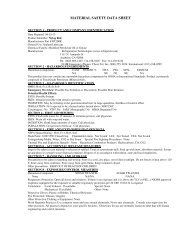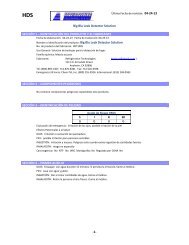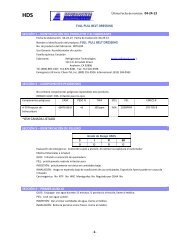Balancing of a Water and Air System (PDF
Balancing of a Water and Air System (PDF
Balancing of a Water and Air System (PDF
You also want an ePaper? Increase the reach of your titles
YUMPU automatically turns print PDFs into web optimized ePapers that Google loves.
112<br />
can be used. If these become too expensive or unwieldy, measure the flow by Pitot tube<br />
traverse.<br />
Taps for Pitot tube traverses can be installed in either vertical or horizontal pipe runs. As<br />
illustrated in Figure 13.7, the taps must be perpendicular to the pipe <strong>and</strong> at 90" from one<br />
another. Adequate clearance [roughly the pipe diameter, plus three feet (1 m)] must be<br />
available at each tap to install <strong>and</strong> position the Pitot tube.<br />
If make-up enters or blow down leaves the tower or the system at a point where it will<br />
affect any <strong>of</strong> the measured test values, they must either be shut <strong>of</strong>f for the duration <strong>of</strong> the<br />
test or the flow rates measured. Usually, these measurements lend themselves to a<br />
volumetric or bulk measurement procedure. In many instances, a water meter will have<br />
been installed in the make-up line <strong>and</strong> can be used for this purpose. In virtually all<br />
instances, the blow down can be valved <strong>of</strong>f during the test period.<br />
Fan Motor Power<br />
Most cooling tower fans are driven by electric motors <strong>of</strong> 480V or less. The preferred<br />
method for measuring power is to use a calibrated, clamp-on wattmeter to measure the<br />
KW input to the motor(s) <strong>and</strong> convert this to<br />
Horse power output using the motor manufacturer's efficiency values. Brake horsepower<br />
can be calculated.<br />
Wind Velocity<br />
When a cooling tower test is run under conditions <strong>of</strong> little or no wind, the parties to the<br />
test <strong>of</strong>ten may agree to forego measurement <strong>of</strong> wind velocity. Strict compliance with the<br />
test code, however, requires that wind velocity be measured with a meteorological<br />
anemometer <strong>and</strong> wind vane. For towers with an overall height <strong>of</strong> less than 20 feet (6 m),<br />
the point <strong>of</strong> measurement is 5 feet (1.5 m) above the basin curb at a distance 50 to 100<br />
feet (15-30 m) upwind <strong>of</strong> the tower.<br />
112















